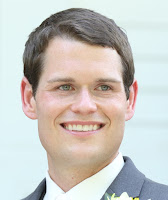 |
| Just as a setting sun concludes the day, my time in Finland has come to an end. |
I have put off writing this blog post for a while. Sitting here now typing these words means my time in Finland has come to an end. An end that exemplifies the time old bittersweet paradox perfectly. When I left home back in December, I could not have guessed the mixture of emotions I would feel these last few days in Helsinki. Such a range of emotions compels me to reflect on my experiences.
- I am honored. Honored that the Institute of International Education and the U.S. State Department selected me for the Fulbright program. There are so many amazing educators across the nation who deserve this recognition. I hope those deserving individuals will apply to become a Fulbright Teacher soon.
- I am thankful. Thankful to have been given the opportunity to participate in the Fulbright Distinguished Awards in Teaching Program. Thankful to have such a loving family. They have selflessly taken care of “life” in Kentucky so I could focus on my research.
- I am grateful. Grateful to my school district, Simpson County Schools. The district has supported me every step of the way. The administrators and teachers at my school have given me encouragement, support, guidance, and the opportunity to pursue professional growth.
- I am eager. Eager to return home to the ones I love and the life I left behind. I have so much to tell and show people about my journey to Finland. My friends and family will be a perfect audience.
- I am excited. Excited to bring my research and observations of Finnish education to the great state of Kentucky. There, dedicated teachers are performing at the highest levels. They give students new learning opportunities that embed the latest innovations. My colleagues are also eager to continue improving students’ education.
- I am uneasy. Uneasy about leaving a place I have come to know for so long. I will soon have a new schedule, a new routine, and new customs to abide. I cannot help but feel troubled about this transition. Fortunately, I have the greatest support group in the world.
- I am hopeful. Hopeful to use all that I have learned in Finland to become a better educator. My research and inquiry project have opened my eyes to new possibilities. I have spent hours scrutinizing my own teaching style in hopes of discovering how to integrate innovative practices. This have given me a fresh perspective and a boost of motivation.
I thought I understood the Fulbright mission when I applied for the Distinguished Awards in Teaching Program over a year ago. I knew what it said, but I now I really know what it means. Fulbright’s purpose is to expand international collaboration through exchanges of talent and knowledge. I have absorbed new ideas, useful tips, and a fresh perspective from my interactions with people in Finland. I hope they feel the same.
You really don’t know what you got until it’s gone. Hey, isn’t that a rock ballad from the 80’s? Anyhow, I have tried to think of all the times I have been surprised in Finland. It has been a lot believe me. Each day brought something new and interesting, usually subtlety and unexpectedly. I have also tried to think of all the things I will miss. Just like I did not realize all that I would miss from home when I left four months ago (i.e. attending college basketball games, driving through the countryside), my longings for Finland will come later. Until then, here are two lists that I know will get longer with time.
A list of surprises:
- Short and dark winter days
- Long and bright spring days
- Going from sunny skies to heavy snow fall
- The accessibility to large quantities of coffee
- Continuing a regular routine when there is a blizzard
- Finnish hospitality and friendliness
- Invitations to dinners, birthday parties, and special events
- School’s enthusiasm for me to visit
- Professionals walking around the office without shoes on
- Finns’ strong connection with nature
A list of longings:
- Finnish sunsets
- Riding the tram
- Sauna
- Karelian pastry
- Walks along the bay
- Free admittance to museums with my year pass
- Visiting Tallinn, Estonia
- The way the snow brightens the night
- Long bus rides to different cities
- Spending time with fellow Fulbrighters
It is time to say farewell. I look forward to returning to this blog and reading through my journey to Finland. Who knows? I might feel compelled to write new posts. And I am definitely coming back to Finland one day. Maybe this time in June or July. Yet, while back in the states, I have a feeling I will “see” reflections of Finland when I least expect it.


























































